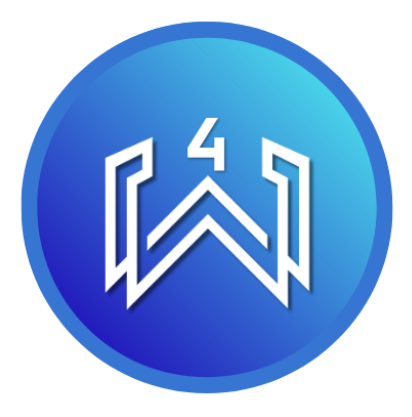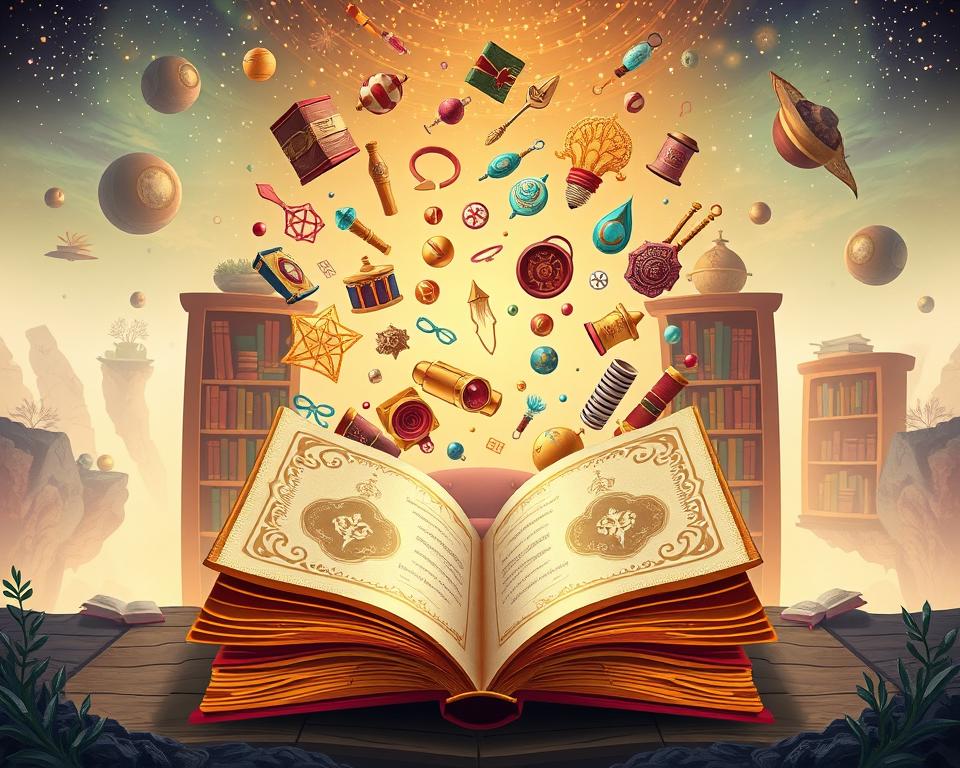Advertisements
Did you know that the first website in history has been online since 1991 at CERN?
I'm going to tell you some real and brief facts. So you can understand how innovation affects your daily life. Here you'll find clear and up-to-date information on terms, milestones, and brands you may have thought you knew.
You'll see examples that connect past and present: from the origin of the term "robot" to the 5MB IBM RAMAC drive. We'll also discuss why companies test products in New Zealand and how military GPS was opened up for civilian use in 2000.
My goal is to inform and entertain you with an educational and practical approach. I'll give you tips for better screen reading, security insights like bug bounty programs, and reasons to cross-check sources.
Explore these curiosities with discretion and respect for the rules; in the end, you'll feel more equipped to understand the digital world around you.
Introduction: Technological curiosities that connect history, science, and your everyday life
The story shows how inventions and decisions of science change your way of living every day.
Reading on a screen is different: according to Nielsen, you read about 10% slower, and your blink rate drops from ~20 to ~7 times per minute. This explains why you notice fatigue or dryness when you spend long hours in front of a device.
Some milestones remain accessible. CERN's first website has been online since 1991. And the GPS, which today guides millions of users, was opened to civilian use in 2000 by decision of President Clinton.
“Small facts from history and science explain how maps, emails, and screens work in your everyday life.”
- We'll explain how you read differently on devices and what habits help.
- You will connect historical facts with engineering decisions that affect current users.
- You'll have a clear and engaging guide to explore real-life examples on your own.
Words, marks and symbols that are not what they seem
Some words and symbols come from literary works rather than factories or laboratories. Here are two examples that have changed your image of world digital.
The origin of “robot”: from Czech to global imagination
The word “robot” comes from term Czech robota, meaning forced labor or heavy labor.
Karel Čapek popularized it in 1920 in a play. It didn't originate in a company; it was born in literature and shaped how you think about machines and work.
Firefox's mascot: a red panda, not a fox
The icon you think is a fox actually represents the red panda, whose name in English is “firefox.”
The project avoided “Firebird” due to trademark conflicts and chose a name and design that companies used to protect identity and registration.
The logo simplified features so that it would be recognizable worldwide and not depend on knowledge of the animal.
“Names and symbols tell stories: sometimes they come from books, other times from the need to distinguish a brand.”
- Robot: from theatre to technical culture.
- Firefox: branding, legality and design combined.
- Looking at names carefully helps you understand their context.
From the first emails to the first website: milestones that defined the web
A brief journey through dates and inventions will show you how the grid that you use today.
Mailbox at MIT (1965)
In 1965, MIT developed Mailbox: a system for leaving messages on the computer itself. It was simple, local, and allowed users to share notes without printers or paper.
ARPANET and the first transmission (1969)
ARPANET connected machines and facilitated the first exchange between computers. This technical leap opened the door to protocols and addresses that still form the basis of online communication.
1971: Ray Tomlinson and the @ symbol
In 1971, Ray Tomlinson introduced the @ symbol to separate the user and machine in email. This convention made it possible to identify recipients between different systems.
The first website (1991)
On August 6, 1991, the first edition was published Web page in it place from CERN. It was just text and links; that page is still accessible today and shows what the web looked like in its early days.
“Small innovations—local messaging, machine-to-machine networking, a simple @ sign, a minimal page—built protocols and practices that endure decades later.”
- Mailbox (1965): seed of modern messaging.
- ARPANET (1969): communication between machines.
- 1971: Ray Tomlinson's @ for mail.
- 1991: CERN's first website, text and links.
Technology and launch curiosities: why New Zealand is a world laboratory
Early releases often appear first in low-risk locations and users representative. New Zealand meets several ideal conditions for testing functions before a large deployment.
Geographic isolation, language and market size
Insulation reduces the likelihood of leaks. English facilitates support and measurements. Plus, the market is small enough to correct errors quickly.

- Lower risk: failures affect fewer people and are easier to control.
- Reliable data: Companies get real usage metrics that reflect Western behavior.
- Rapid scaling: If the test goes well, global release is more certain.
“Microsoft, Facebook, and Yahoo have used New Zealand as a pilot market to fine-tune features and security.”
If you travel or follow news, pay attention to reports from Oceania: features are often born there that you will then see in the rest of the world. world.
When hardware took up entire rooms: pictures, disks, and the first computer
Decades ago, the devices that fit in your pocket today filled entire rooms.
IBM RAMAC (1956) marked a before and after: its magnetic disks offered barely 5 MB, weighed more than a ton and were rented for $3,200 per month.
Imagine that: a machine that needed a room to store what your phone now stores in seconds.
How an image was captured in the early years
The first known photograph (1826) required about eight hours of exposure to obtain a single image.
The daguerreotype, popular since 1839, reduced that time to about 15 minutes, but still required a lot of patience and direct light.
“What you can do with a click today used to cost space, time, and resources.”
- Scale: A 5MB disk took up a room.
- Cost: rental equipment, not consumer accessories.
- Time: Capturing an image could take hours or many minutes.
- Transformation: Miniaturization turned these machines into tools for millions.
This contrast helps you appreciate why today you share thousands of photos in seconds and carry computing power that in other years would have been an entire room.
Reading on screens is not the same: speed, flickering, and digital ergonomics
Reading on a screen requires more attention than reading on paper, and that changes your rhythm. Studies show that the same text is processed differently depending on the medium and conditions.
Slower reading speed when reading on screen
The Nielsen Norman Group found that you read about 101% of the time slower on screen. This happens on computers, tablets, and mobile devices.
Blinking, dryness and concentration
In front of a monitor your blinking can go from ~20 to ~7 times per minute. This reduction contributes to a feeling of dryness and eye fatigue.
Practical tips: Take short breaks every 20–30 minutes, adjust the brightness and contrast, and choose legible fonts for the text. Switch between screen and print when you need to read a lot.
These recommendations are general. Adapt habits according to your experience and remember that different people They respond differently to each device.
“Regular breaks and simple adjustments improve comfort and maintain your reading pace.”
- Adjust lighting and font size.
- Blink consciously and use artificial tears if directed by a professional.
- Print only what is necessary and alternate formats to reduce fatigue.
Technology, maps, and pop culture: from military GPS to baby names
The GPS path shows how a system Designed for defense, it reached the pockets of millions. Its first satellites were launched in 1978, and its combat utility became clear during the Gulf War.
From the army to routes, trips and games
In 2000, President Clinton allowed civilian use of the signal. In a few words, decades It went from being a military tool to supporting navigation, delivery, and entertainment apps.
Maintenance costs around US$1.4T2 billion per day, a cost borne by US taxpayers.
When technology influences the names
Brands and assistants changed the culture: Apple, Siri, and Mac inspired nicknames and real names.
On the other hand, Alexa lost traction in the US after 2015 due to its strong association with the assistant. This shows how products affect social decisions.
- Impact: a military invention that today guides travel and games.
- Practicality: Many apps offer offline mode to save data on the road.
- Privacy: Check location permissions and settings on your devices.
“A system created for the military ended up making life easier for millions in cities and deserts.”
Security and Privacy: Mistakes, Rewards, and Lessons from the Past
The simplest mistakes often expose bigger ones: understanding why prevents you from repeating them. Here, you'll see how responsible incentives work and what practices you should adopt today.
Reward programs: incentives to improve safety
The bug bounty They put a price on useful findings. Facebook, for example, offers from $500 for responsible reporting.
The policy requires that you not exploit bugs or violate the privacy of others. This rewards cooperation and protects the user.
A missile password was 00000000: bad practices that cost
A real-life case showed that simple passwords were used for years on critical systems. This example underscores why weak practices create serious risks.
Practical and realistic advice
- Enable two-factor authentication (2FA) and use password managers for unique keys.
- Keep your computer and apps updated; patches fix bugs that attackers exploit.
- Don't forward suspicious emails; verify senders and avoid opening unconfirmed shortened links.
- If you work in programming, promote responsible code reviews and testing in pre-production.
“There is no such thing as total invulnerability; the goal is to reduce risk through habits and processes.”
If you want to dig deeper into real-life risks and data loss scenarios, listen to this episode about how data is stolen: how they steal your data.
Conclusion
This final look helps you connect data and habits to use digital technology meaningfully.
The history shows clear milestones: Mailbox (1965), ARPANET (1969) and the @ of 1971 that defined the email. The first page from CERN (1991) is still in the same place and remembers how much the grid in a few decades.
Think of the scale: a 1956 RAMAC with 5 MB and tons of weight in front of you. device current. This transformation isn't just technical; it affects how you work, read, and share information every day.
To take care of your security and privacyUse strong passwords, enable 2FA, keep your device up-to-date, and check for suspicious emails. Bug bounty programs (starting with $500) show that reporting bugs helps everyone.
Explore trends with curiosity, compare sources, and apply best practices. This will improve your experience and protect your data in this increasingly connected world.



